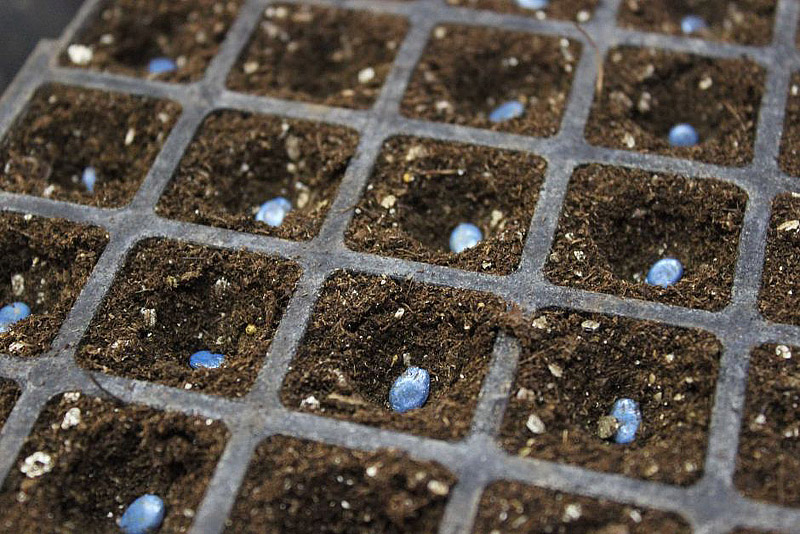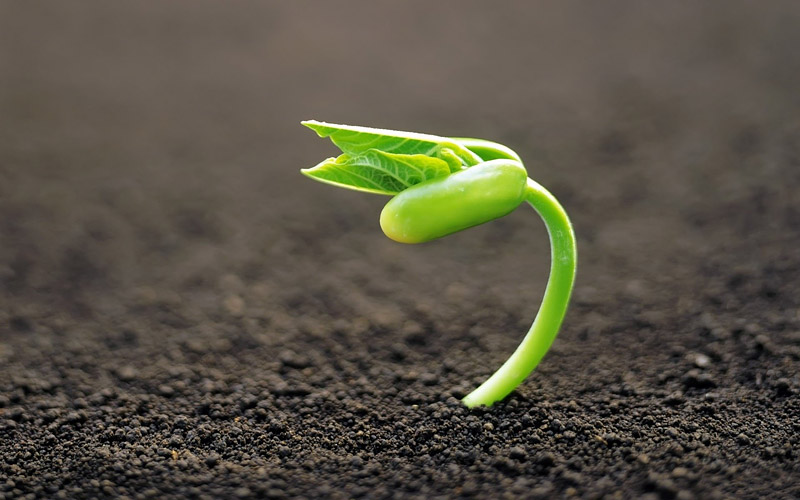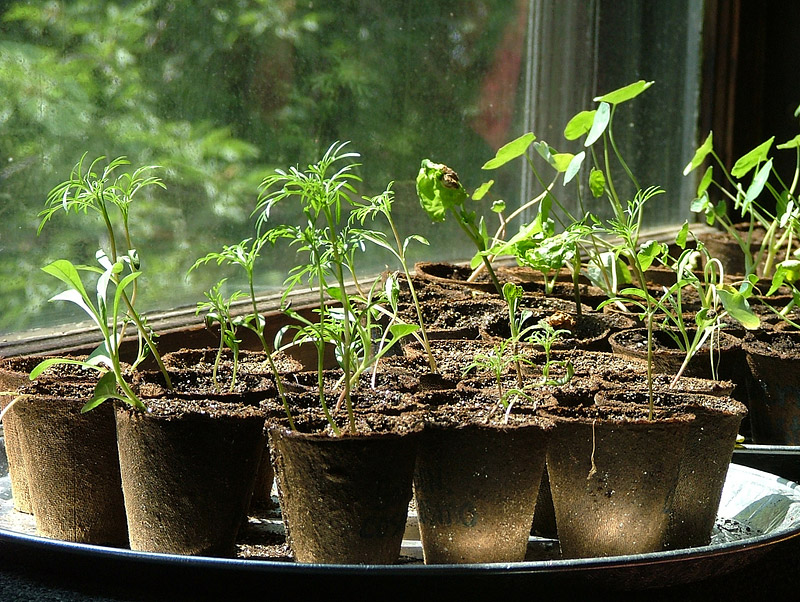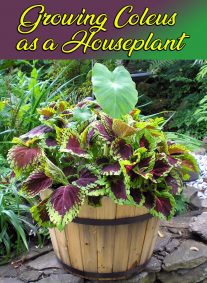
A handy guide to problems with seed sowing, germination, general growing pains and how to avoid them next year!
Why didn’t my seeds germinate?
There are many reasons why seeds may fail to germinate, and not all of them are your fault! Most problems are related to the sowing conditions and once you know what can go wrong, these setbacks can be easily avoided.
So… What went wrong?
1. The seed was old:
Check the sow by date on the packet. Seed that is beyond this date will often still germinate but the success rate is likely to be reduced. Some seed, such as parsnip, lose their viability rapidly so it is worth buying new packets each year to avoid a disappointing germination rate.
2. It was too hot/ too cold:
Indoors: Invest in a soil thermometer. Most species can be sown successfully indoors at temperatures between 55°F – 70°F which are easily achieved in a heated propagator or on a windowsill indoors. However, extremes of heat or cold may prevent seeds from germinating so it is well worth monitoring the soil temperature. Always check the recommended germination temperature on the seed packet. Once germinated, you can move your seed trays to a slightly cooler position.
Outdoors: Keep an eye on the weather and avoid sowing if the soil is cold and wet, as this will cause the seed to rot. Seed packets usually advise when to sow but this will vary between warm southern gardens and cold northern locations. In the north it may be necessary to sow a month later than the seed packet suggests if the soil remains cold. Help early sowings along by using cloches to warm the soil.
3. The soil was too wet/ too dry:
Indoors: Seeds need moisture to germinate, but if the soil is too wet then the seeds are likely to rot. Ensure that seeds are kept evenly moist by thoroughly wetting and draining the compost before you begin sowing. After sowing you can cover the seed tray with a sheet of glass or clear plastic to retain moisture – the compost should remain damp for several days or more. If the soil surface begins to dry out then simply stand the seed tray in water until the surface becomes moist – but be sure to let it drain again. Remove the glass or plastic as soon as the seeds begin to germinate to prevent the seedlings from rotting.
Outdoors: Wet, poorly drained soils and dry, sandy soils can be difficult environments for seed germination. Both can be improved by adding plenty of organic matter such as well rotted manure or homemade compost. On wet soils this will improve drainage and air circulation, while on dry soils organic matter acts as a sponge, holding water in the soil for longer.

4. The seed were sown at the wrong depth:
Some seeds need light to germinate, but many don’t. The amount of light that the seed receives will be determined by how deeply it is sown. Check the seed packet before you bury your seeds beneath the soil, as they may only need a light sprinkling of compost or vermiculite to get them underway.
If no instructions are provided then seed size often gives a good indicator of how deep to sow them. Very small seed such as Begonia and lettuce only need a very light covering of sieved compost or vermiculite; while larger seed such as sunflowers and beans will need to be sown several centimeters below the soil surface. As a rule of thumb most seed can be planted at a depth of 3 to 4 times their own width.
5. The seed needed special treatment:
Did the seed packet mention pre-chilling, chipping, scarifying or soaking? Some treatments may sound a bit strange but they are essential to help the seed germinate.
6. The seeds were eaten:
Outdoor sowings of beans, peas, sunflowers and other large seed are often at risk from attack from the moment that you have sown them. Mice and birds love to dig them up for an easy snack. Protect your seed with cloches, chicken wire or netting to give them time to germinate safely.
What’s happened to my seedlings?
Transferring delicate seedlings from seed trays to individual pots will provide each seedling with the space, light and nutrients to develop into strong, healthy plants. But this can be a critical time in the plants development and things don’t always go smoothly.
So… What went wrong?

1. The seedlings were pricked out too early:
As a rule of thumb most seedlings can be ‘pricked out’ when the first true adult leaves show (i.e. the second set of leaves after the initial ‘seed leaves’ or cotyledons). But before you begin it’s always worth checking that they have sufficient root to cope with the transplant process. Simply lift one or two seedlings out of the tray with a dibber and take a look. If the roots are still very tiny then postpone pricking out for a few more days, or until the roots have made sufficient growth. It won’t do them any harm and that extra time will make them more capable of coping with the transplant.
2. The seedlings were pricked out too late:
It’s easy to sow too many seeds and then find that you don’t have time to prick them out. Delays in pricking out, especially for fast growers like tomatoes can lead to competition for light and nutrients. If left for too long, your seedlings will start to look sickly as the nutrients in the soil are depleted and this can cause a significant check in their growth even after pricking them out.
3. The seedlings were damaged during pricking out:
Your delicate seedlings can be easily bruised and damaged so you should never handle seedlings by the root or stem. Seedlings emerge with two seed leaves called cotyledons before developing their first set of ‘true’ leaves, and these cotyledons can be used as convenient handles for holding your plants with. Once the ‘true’ leaves have formed these seed leaves are no longer required so it doesn’t matter if they get damaged.
4. The seedlings just died:
Did your seedlings mysteriously keel over, or rot away at the base of the stem? These symptoms are signs of damping off, caused by a number of fungal diseases, and often occur if the soil is persistently wet. Take the following steps to reduce the risk of damping off:
- Use fresh commercially produced compost instead a half used bag from last season.
- Always wash and dry pots and seed trays before re-using them. Disinfect them with a little diluted Jeyes Fluid.
- Don’t over water – let the compost dry out slightly between watering to keep fungal spread at bay.
- Water with clean tap water instead of using rain water.
- Keep seedlings well ventilated to ensure good air circulation.

5. The seedlings are tall and spindly:
Your seedlings will naturally grow towards the light, but when light levels are poor this can cause the growth to become tall and spindly. Warm temperatures will encourage leggy growth too. If you are growing plants on your windowsill, this can be a real problem, resulting in thin spindly stems that flop over. Try to use the brightest windowsill possible (although its best to avoid direct strong sunlight as this may scorch your plants.)
6. The plants all died when they were moved outdoors:
Always check the weather before you move your plants outside. Cold temperatures, scorching heat, wind, and heavy rain can all damage or even kill your young plants. Even if the weather conditions are favorable, plants that have been grown indoors will need to be ‘hardened off’ before you can plant them outside. This allows them to acclimatize to the temperature, air movement and weather conditions before you plant them out. Place them outdoors in a sheltered position during the daytime and bring them back in at night. After 7 to 10 days, they should be able to cope with the big outdoors!




Leave a Reply